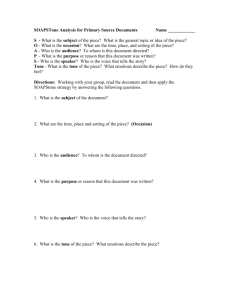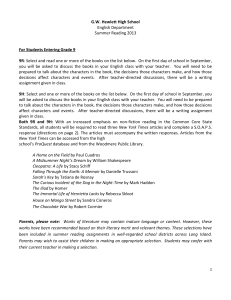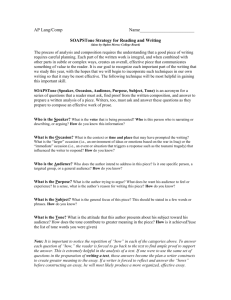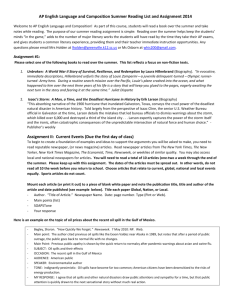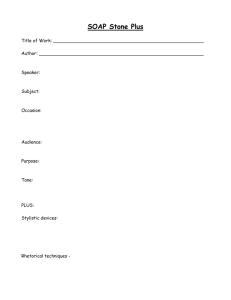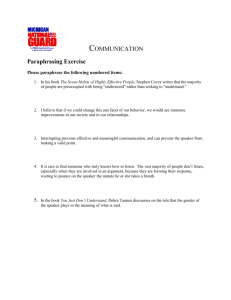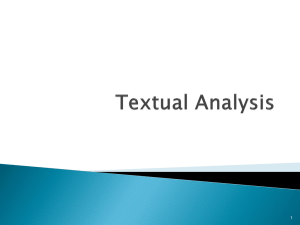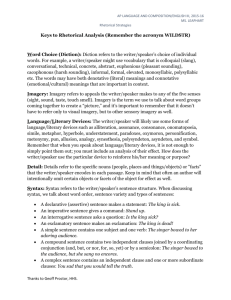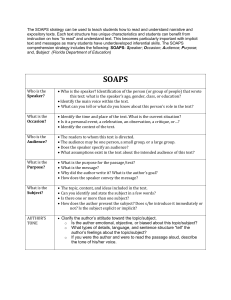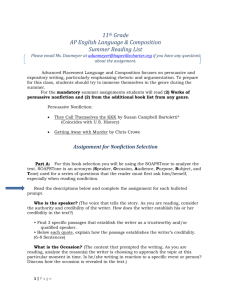Methods of Rhetorical Analysis AP English Language and
advertisement
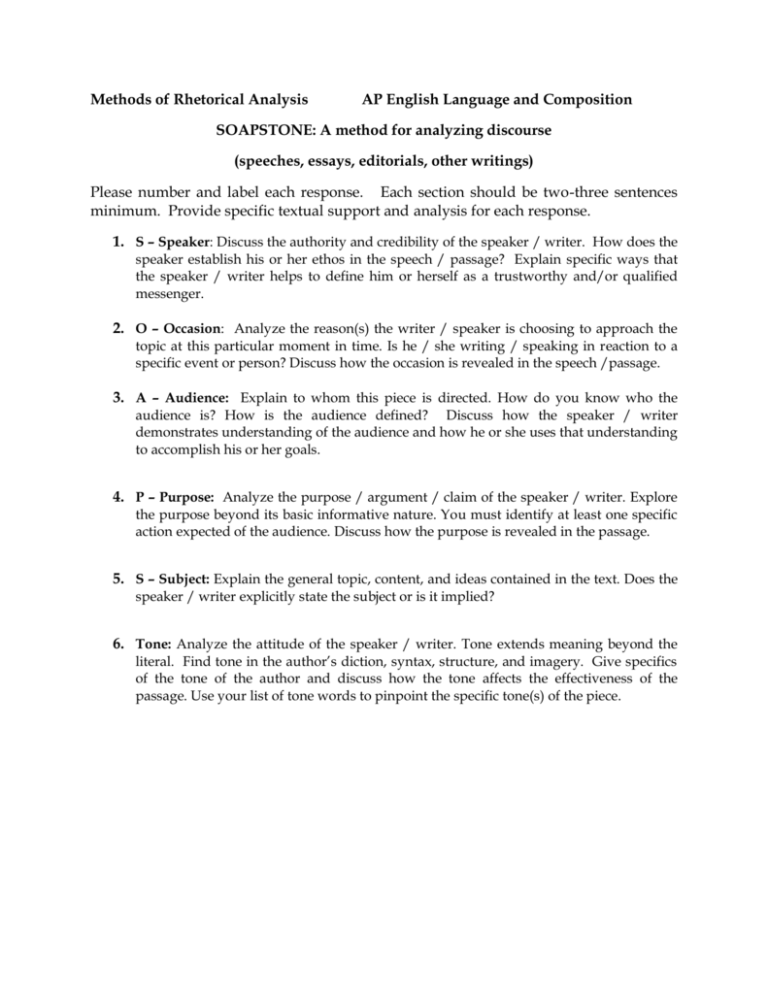
Methods of Rhetorical Analysis AP English Language and Composition SOAPSTONE: A method for analyzing discourse (speeches, essays, editorials, other writings) Please number and label each response. Each section should be two-three sentences minimum. Provide specific textual support and analysis for each response. 1. S – Speaker: Discuss the authority and credibility of the speaker / writer. How does the speaker establish his or her ethos in the speech / passage? Explain specific ways that the speaker / writer helps to define him or herself as a trustworthy and/or qualified messenger. 2. O – Occasion: Analyze the reason(s) the writer / speaker is choosing to approach the topic at this particular moment in time. Is he / she writing / speaking in reaction to a specific event or person? Discuss how the occasion is revealed in the speech /passage. 3. A – Audience: Explain to whom this piece is directed. How do you know who the audience is? How is the audience defined? Discuss how the speaker / writer demonstrates understanding of the audience and how he or she uses that understanding to accomplish his or her goals. 4. P – Purpose: Analyze the purpose / argument / claim of the speaker / writer. Explore the purpose beyond its basic informative nature. You must identify at least one specific action expected of the audience. Discuss how the purpose is revealed in the passage. 5. S – Subject: Explain the general topic, content, and ideas contained in the text. Does the speaker / writer explicitly state the subject or is it implied? 6. Tone: Analyze the attitude of the speaker / writer. Tone extends meaning beyond the literal. Find tone in the author’s diction, syntax, structure, and imagery. Give specifics of the tone of the author and discuss how the tone affects the effectiveness of the passage. Use your list of tone words to pinpoint the specific tone(s) of the piece. SPATER: A method for analyzing visual media (cartoons, photographs, drawings, advertisements, video, other visuals) Please number and label each response. Each section should be two-three sentences minimum. Provide specific textual support and analysis for each response. 1. S – Subject: Analyze the subject of the image. Explore the possibility of a larger, implied subject beyond just the immediate, obvious subject itself. Discuss the context / occasion of the image. 2. P – Purpose: Define the implied and /or explicit purpose of this image. Remember that purpose must go beyond informing and must be connected to a specific action. Examine any political implications of the image. Could the image be considered propaganda? Analyze how the image furthers an agenda. 3. A – Audience: Identify the forum (magazine, newspaper, website) for which the image was created. Analyze how the original placement of the image is connected to audience. Determine whether the audience has changed and / or expanded over time. Describe the characteristics of the primary and secondary audience. 4. T – Tone: Analyze the tone that the creator (photographer / artist / cartoonist) of the image has toward his / her subject. Explain how the tone is communicated to the audience. 5. E – Effect: Analyze the intended effect the image has on the audience. Explore the possible unintended effects of the image. 6. R - Rhetorical Devices / Strategies: Analyze the rhetorical devices (strategies) and appeals (ethos, logos, pathos) implied or made explicit in the image. Explain how those appeals function. SOAPSTONE and SPATER Grading Rubric: Superior (8 - 10) 30 points Acceptable Inadequate (6- 7) (0 - 5) 1. _____________/10 Depth of Analysis 2. _____________/10 Understanding of Rhetorical Functions 3. ____________/ 10 Appropriateness of Textual Support
